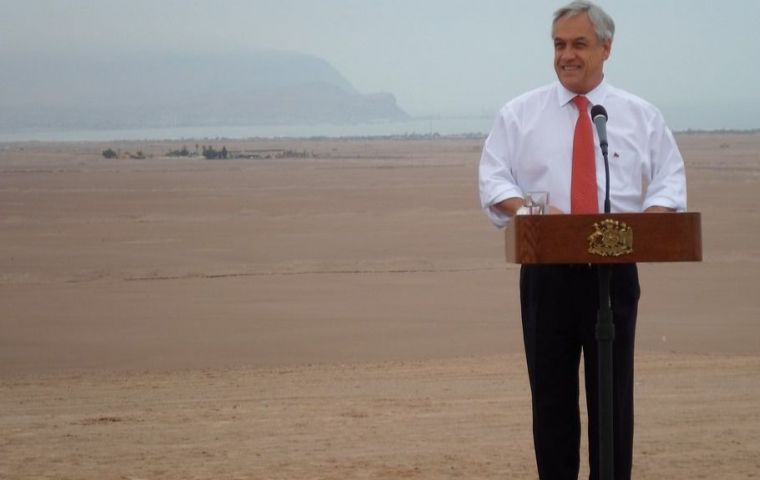MercoPress. South Atlantic News Agency
Piñera's “Ten Pillars” to save water in drought stricken Chile
 “For the last thirteen years Chile has suffered the worst drought in its history. This silent seism has hit the whole country,” said Piñera
“For the last thirteen years Chile has suffered the worst drought in its history. This silent seism has hit the whole country,” said Piñera Chile presented on Monday a “Plan to combat Drought” to increase the provision of water and improve its efficient use thus ensuring the supply for human consumption and the production of food.
President Sebastian Piñera announced on Sunday during a visit to a drought hard-hit commune close to the capital Santiago during which he said the Metropolitan Region was now on agriculture emergency.
“For the last thirteen years, Chile has suffered the worst drought in its history. This silent seism has hit the whole country but with special intensity the regions extending from the Atacama to Bio Bio”, said Piñera, adding that “the prolonged drought has meant a precipitations deficit between 60% and 80% compared to a normal year, thus affecting flow rates of rivers and of our reservoirs, which are close to historic minimums”.
Therefore the decision to add to the list of agriculture emergencies, --Coquimbo, Valparaíso, O'Higgins and Maule Regions---, the Metropolitan area.
Anyhow and despite the very serious situation, president Piñera outlined what he defined as the “Ten pillars approach” to improve the hydric provision. First of all, he mentioned plans to improve the 101 water basins of Chile, secondly ensuring drinking water for Valparaiso and Santiago, filling up the dams of El Yeso and Los Aromos with winter water from the Maipo and Aconcagua rivers.
Thirdly, public investment has trebled to US$ 340 million; fourthly the protection of water producing ecosystems and subterranean water. Besides conservation of the wetlands, some 230,000 hectares and a cadastre of glaciers.
The fifth point mentioned by Piñera was strengthening the institutional framework, creating the Waters Deputy Secretariat, a new Waters Code and the construction of desalination plants, currently producing 6,000 litres per second.
Likewise increasing the number of desalination plants, particularly in Coquimbo and Valparaiso the most affected regions by the lack of rains, plus better management of aquifers, refilling them when hydric abundance.
In seventh place doubling investment in technical irrigation, building water deposits and sealing irrigation channels. Piñera also mentioned that the sanitary system provides water for 15 million Chileans and represents 11% of overall consumption. The Chilean president pledged his administration would work in coordination with the largest water consumers to improve efficiency and with city mayors to impede the wasteful use of water, such as spraying gardens during the day or washing cars.
Finally, the president announced help for small farming families suffering from the drought: a hydric emergency in 110 communes plus a special fund of US$ 125 million to aid them with water-saving technologies.




Top Comments
Disclaimer & comment rulesCommenting for this story is now closed.
If you have a Facebook account, become a fan and comment on our Facebook Page!